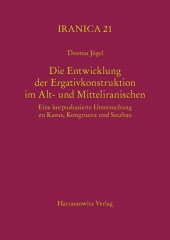This book explores the legal culture of the Parsis, or Zoroastrians, an ethnoreligious community unusually invested in the colonial legal system of British India and Burma. Rather than trying to maintain collective autonomy and integrity by avoiding interaction with the state, the Parsis sank deep into the colonial legal system itself. From the late eighteenth century until India’s independence in 1947, they became heavy users of colonial law, acting as lawyers, judges, litigants, lobbyists, and legislators. They de-Anglicized the law that governed them and enshrined in law their own distinctive models of the family and community by two routes: frequent intra-group litigation often managed by Parsi legal professionals in the areas of marriage, inheritance, religious trusts, and libel, and the creation of legislation that would become Parsi personal law. Other South Asian communities also turned to law, but none seems to have done so earlier or in more pronounced ways than the Parsis.
This book is based upon previously unexamined primary sources from archives rediscovered over the past decade: the Bombay High Court (Mumbai) and the Judicial Committee of the Privy Council (London) as well as takes case law seriously, while most work on South Asian legal history focuses on legislatio. It presents one of the first studies in South Asian legal history by a scholar trained both in law and in history.
See here the ToC of this book.
Mitra Sharafi is an Assistant Professor at the University of Wisconsin Law School, with an affiliation appointment in history at the University of Wisconsin, Madison.
 Gharipour, Mohammad (ed.). 2015. The Historiography of Persian Architecture. (Iranian Studies 29). New York, NY: Routledge.
Gharipour, Mohammad (ed.). 2015. The Historiography of Persian Architecture. (Iranian Studies 29). New York, NY: Routledge.
 Kleiss, Wolfram. 2015.
Kleiss, Wolfram. 2015.  Goldman, Leon. 2015.
Goldman, Leon. 2015.  Seyed-Gohrab, Ali-Asghar (ed.). 2015.
Seyed-Gohrab, Ali-Asghar (ed.). 2015. Fitzpatrick-McKinley, A. (ed.). (2015).
Fitzpatrick-McKinley, A. (ed.). (2015). Sharafi, Mitra. 2014.
Sharafi, Mitra. 2014.  Lubotsky, A. (2015).
Lubotsky, A. (2015).  Jügel, Thomas. 2015.
Jügel, Thomas. 2015. 